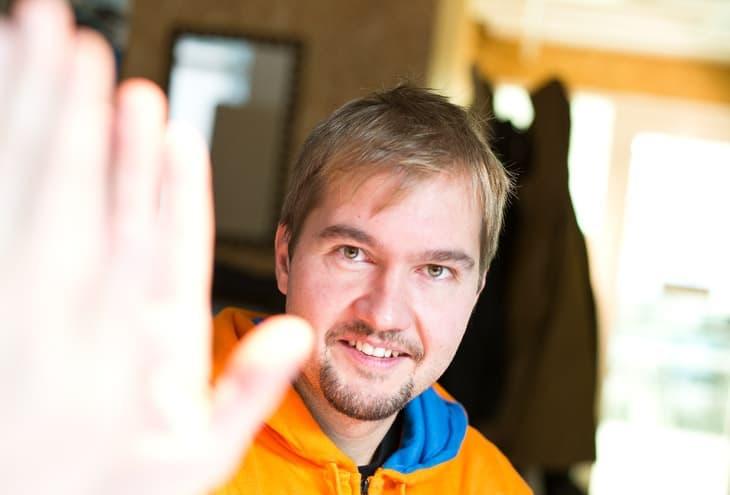16Aug2013
by Kristal Davidson
It is not uncommon to call economists and consultants of the likes of Vijay Govindarajan gurus. His opinion and advice is sought after throughout the world of management, business and science.
Vijay Govindarajan is called a guru because of the simplicity of his words and the depth of his belief they seem to arise from: a simplicity that makes him special in his branch, a simplicity that easily convinces and leaves no room for doubt, and a simplicity that masters even the most complicated conundrums of our time without actually being too simple, but instead plausible and profound. Another reason might be his calm charisma and the mild yet firm voice when explaining his beliefs. His faith lies in innovation.
Trinities of Principles
This above chosen trinity for describing the simplicity which makes Vijay Govindarajan´s speeches and books so appealing was no accident; it is rather supposed to emulate one of his habits. All his replies, explanations and principles consist of catchy trinities (groups of three). Another hint at his “guruism” as one might call it, as trinities have always played an important role in beliefs all over the world and throughout the ages.
The age we live in and the obstacles it presents to management are his field of specialty. How can companies be successful despite globalization and recession? His simple answer: through innovation.
VG, as he likes to be called, clarifies that good ideas alone do not make innovation. After having worked with CEOs and top management teams of more than a quarter of the Fortune 500 firms,he concludes that companies do not suffer as much from the lack of ideas as from the inability to convert these ideas into impact. He has spotted three reasons why coming up with ideas is easy, but execution is tough:
“Even after the innovation has become successful, people always relate to the person who carried the initial idea and not to those who turned the idea into innovation”. Execution on the other hand is boring, tenacious, slowed down by an abundance of tiny little details, and it costs resources. And at the end it is not recognized all that much; which is unfair. Only during execution there is a chance of failure. VG intentionally avoids the word risk. Mastering the role of a motivating guru he chooses the term opportunity. From where he stands, the innovation process enables creating perfect products by learning from failure. “Learning” being the operative word for the professor when asked, how managers can actually create innovation:
• Form a dedicated team with new capabilities and new processes. The core business, which VG calls the performance engine, cannot do it.
• Connect the dedicated team with the performance engine so it can leverage some of the capabilities of the core.
• Treat innovation as an experiment.
VG particularly emphasizes the third principle: “Evaluate the performance of the innovation leader – not based on sharp and financial measures, but based on the ability to learn from experiments”, VG teaches.
Questioning the Status Quo Is Key
This also flows into the foundation of innovation: creating an innovation mindset. In this task recruiting sufficient people from outside of the company or even from outside of the industry is crucial. Innovation needs people, who are able to challenge the status quo. Especially successful businesses tend to go into preservation mode assuming, their way of doing things is the only way, because it is working. “Questioning what you do is the starting point for creativity and innovation; that is the key.” And so, according to VG, calling in enough outsiders means creating the necessary innovation mindset.
In his doctrine innovation has become the central way to achieve business growth. He would even go so far as to say, the only way: “If your organization has to grow, and even grow fast, while the overall growth in the world is slow, you have to find new products, new markets, and new customers. Another word for that is: innovation. Therefore the new growth law is innovation”.
Consequently VG urges companies in Europe to think about innovation now. After analyzing the many recessions Western economies have experienced over the last 100 years, he points out yet again three results. The most striking ones are that recovery always lasts longer than recession itself and that those companies who survive recession and prosper later are the ones who have invested during recession, preparing for growth by building sufficient competences and ensuring they would be ready for capitalizing as soon as recovery began. So, even when times are rough, VG recommends focusing on scraping together at least enough investments now for enabling growth in the future.
Turning Logic Upside Down
At this point VG generally turns to his own innovation which already is seen as a historical turning point: the concept of reverse innovation. It has been rated one of the ten big ideas of the decade by Harvard Business Review and asks no less than paradigm alteration, as it means turning management logic upside down: Whereas historically multinationals have made innovations in rich countries such as the US and then sold those products in poor countries like India, reverse innovation means doing exactly the opposite.
Exploring how a product which has been developed in a poor country for poor people can also be made appealing to rich customers in rich countries is the essence of reverse innovation. Its core is not to find out what customers need, but to create new needs.
“Reverse innovation is one very significant growth opportunity for multinationals in the next several decades”, VG states. And as simple as this mantra might sound, it advocates profound change and revolution in the minds at numerous headquarters.According to VGall European companies should target emerging markets – not only multinationals, but also smaller entrepreneurs and medium-sized companies.
One of his reasons: Innovation in poor countries does not require as many resources as trying to do the same in Europe. “Therefore, if you are a small company in a rich country, you have a better chance of innovating in a poor country. Even with limited resources you can actually create meaningful innovations there.” But in order to do so successfully VG advises to find a suitable strategic alliance partner there, who fully understands the local market and has all the local capabilities at hand.
Unifying Growth with Conscience
Thereby the innovation guru even offers comfort to those whose moral standards might hinder them from expanding to poor countries. Corporations only service about one billion of the seven billion people in the world, VG claims. This means that the vast majority are non-consumers left to the care of charities and governments. That in his eyes is old world thinking: “We have to convert those non-consumers into consumersby innovating products which suit them and enable them to become consumers.” One of his favorite examples is the cell phone. Only 15 years ago it was considered a luxury in India which only very few people were able to afford. Today there are more than 800 million cell phones in India, says VG: “Innovation is the answer to solving the problems of the poor. This is not charity; this is a challenge for innovation and for finding viable business models.”
However pure unselfishness does not even need to be the driving force behind reverse innovation, as companies who thrive abroad can use the profit for growth at home. Secondly they still require assets at their headquarters – the before mentioned core of the performance engine, which supports the dedicated team abroad. And third: Ideally the innovations developed in an emerging country will later on be introduced to the home market as well, subsequently creating jobs there. “Therefore”, VG claims: “In order to remain strong and to create jobs in your own countries, you have to become curious about the problems of customers in poor countries.”
VG embodies the German phrase “fortschrittsgläubig” which means believing in progress. And without a doubt VG is a true believer in reverse innovation. So much so, that he even sees it as a means to regaining the respect and trust of the general public which has lost faith in business as an institution and questions CEOs and executives being entitled to leadership in society and politics. Of course, VG agrees, business does indeed possess a dark side. But in the view of the innovation guru it is merely caused by a few bad apples. In contrast he calmly recites his conviction: “I personally believe business is a force for the good. Without business we would not have the standard of living that we have today. Business knows how to innovate, it brings prosperity to humanity.”
BIO
Vijay Govindarajan is the Earl C. Daum 1924 Professor of International Business at the Tuck School of Business at Dartmouth College and widely regarded as one of the world´s leading experts on strategy and innovation.
Rated #3 Most Influential Business Thinkers in the World on Thinkers 50 list 2011.
He received several awards for excellence in research and was ranked by Management International Review as one of the Top 20 North American Superstars for research in strategy and organization.
This article is from the August 2013 issue of Nordic Business Report. Read the full magazine here »
 by:
by: 

 by:
by: 